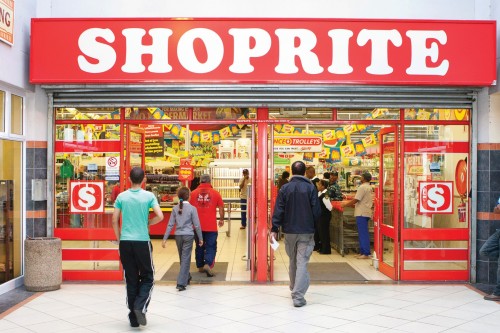South Africa says it received distress calls from 17 citizens who joined mercenary forces fighting ...
Shoprite grows profits in tough retail environment

Money Web / Shoprite manages to drive down its internal food inflation to 2.2%.
South Africa’s grocery retailers are not the type to run scared – whether its from the tough economy or tough competitors and the current environment is no different.
Shoprite, for one, is limiting food price increases in its bid to remain competitive and maintain its position – as far as it’s concerned – at the top of the grocery pecking order.
The retailer, targeting lower to upper income consumers, reduced its internal food inflation to 2.2% for the six months to December 2015, compared with 5.2% in the corresponding period.
Shoprite’s internal food inflation is the lowest compared to that of its peers Pick n Pay and Spar Group. Read more here.
Given the retailer’s price control measures, it seems like Shoprite is protecting market share in an increasingly difficult consumer environment. As Shoprite CEO Whitey Basson puts it: “It is unavoidable that under these circumstances competition among retailers in SA would intensify. This has put margins under pressure as everyone battles for their share of the consumer’s rand.”
Shoprite’s efforts have seen it post an increase in turnover growth of 8.8% to R62.52 billion, which was boosted by festive season sales. Its trading profit grew by 10.4% to R3.14 billion. And its trading margin increased from 5.2% to 5.3%.
The market reacted positively and Shoprite’s shares rose by 4.4% to close at R151.03 on Tuesday.
SA retailers are up against difficult market conditions with consumers facing sustained rising costs, rising interest rates, unemployment and a slowing economy, which would likely put the brakes on their growth.
SA and non-SA stores
In light of these challenges, Shoprite’s core SA stores, which make up two-thirds of its business, reported a sales growth of 7.2%, an improvement from the first quarter’s 4.9%. Turnover rose to R45.9 billion, generating a trading profit of R2.676 billion.
Basson says the growth in turnover reflects the lack of disposable income among its consumers, with shoppers visiting stores less frequently. The retailer has to rely on marketing campaigns, in-store promotions and increased inventory to lure consumers in.
“The chain has continued to subsidise basic food items such as bread, milk and rice, putting money back in the pockets of consumers while also driving volume growth in those product categories,” he says.
Its 199 supermarkets across the continent in markets such as Nigeria, Angola and Zambia, saw an increase of 15.2% in sales at current exchange rates and 23.5% at constant rates. The turnover growth in Shoprite’s Africa operations was negatively affected by the drop in oil prices, particularly in oil-dependent economies of Angola and Nigeria. Currency depreciation in Zambia and Mozambique as well as droughts also hit the retailer’s operations.
“The economies of oil-rich Angola and Nigeria showed surprising resilience despite the challenges brought about by the steep drop in the oil price,” says Basson.
Equity analyst with 36One Asset Management Daniel Isaacs, says Shoprite’s Africa operations performed better than expected. “A lot of retailers going into the continent have been burnt and the school fees Shoprite has paid there over many years seem to be yielding results,” he says.
Shoprite continued with its store roll-out programme, opening 70 new supermarkets in the period under review – mostly outside of SA.
Shoprite’s Liquor Shops was the star performer with 31.6% sales growth. Its furniture division with brands like OK Furniture, OK Power Express, OK Furniture and House & Home, saw decent sales growth of 13.7%, despite the tightening of credit taps under the Consumer Protection Act.
Shoprite’s stock
Investors were rewarded with a 9.1% growth in the interim dividend of 156 cents per share. At a forward price: earnings ratio of 17, analysts rate Shoprite as a discount valuation, given its historic price: earnings ratio of more than 20.
Rexsolom Invest portfolio manager Anthony Rocchi, says if Shoprite’s results are placed in the context of its long-term returns, then it makes its stock unattractive. On a return on assets (ROA) basis, Rocchi says since the peak of 2011 (see graph below), Shoprite is earning lower returns from the assets it employs to generate these returns.

“2015 is shaping up to be the fourth year of shrinking returns which goes a long way to explaining why the share price has gone nowhere in the past four years. Its share price closed at R144.70 exactly four years ago,” he says.












Leave a Reply
Be the First to Comment!
You must be logged in to post a comment.
You must be logged in to post a comment.